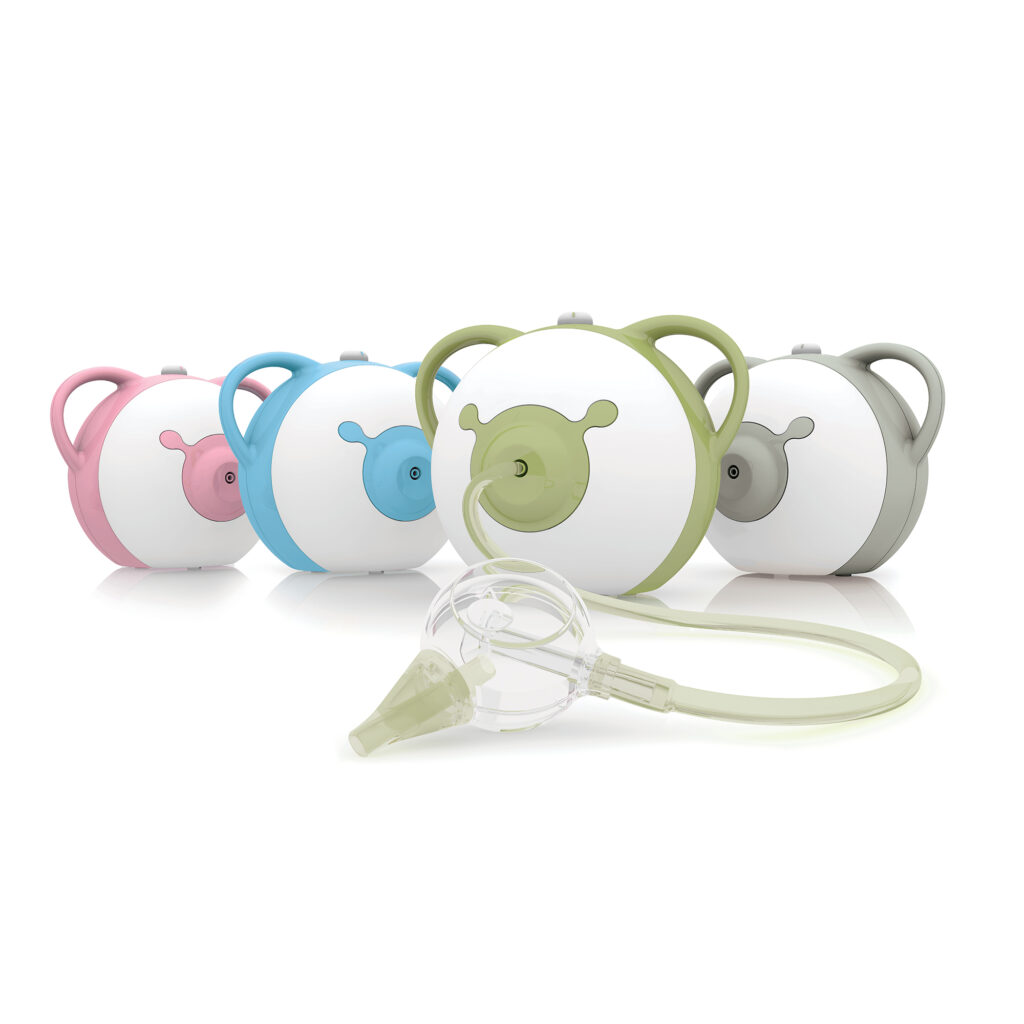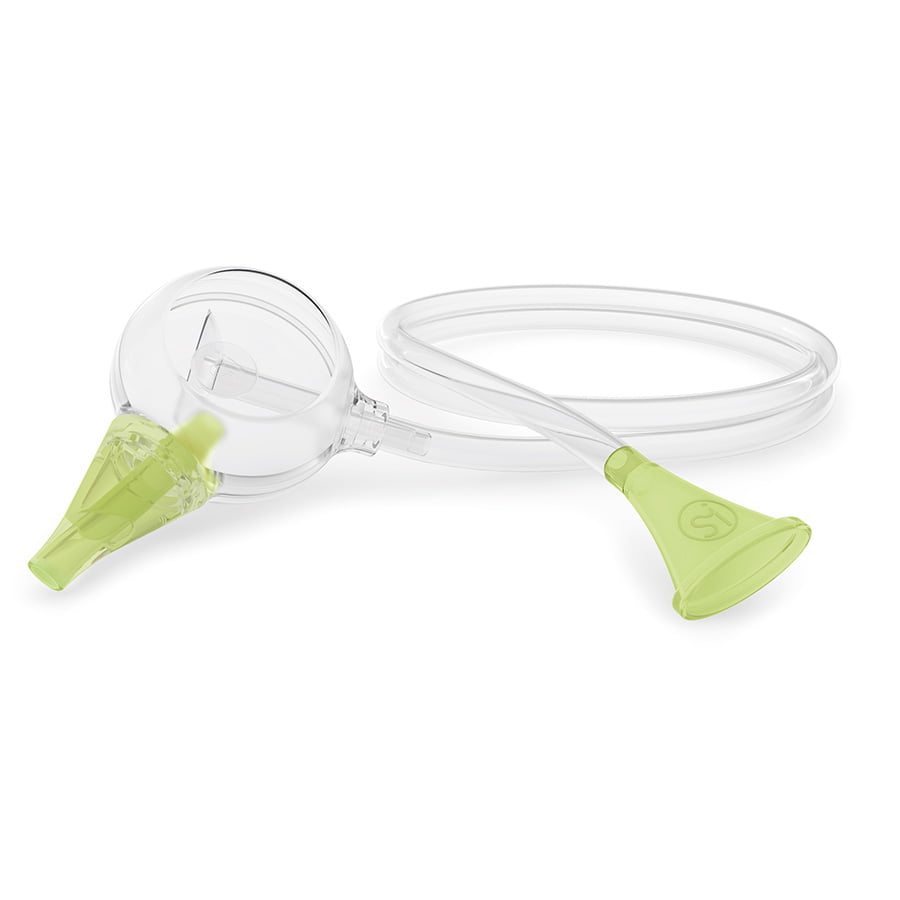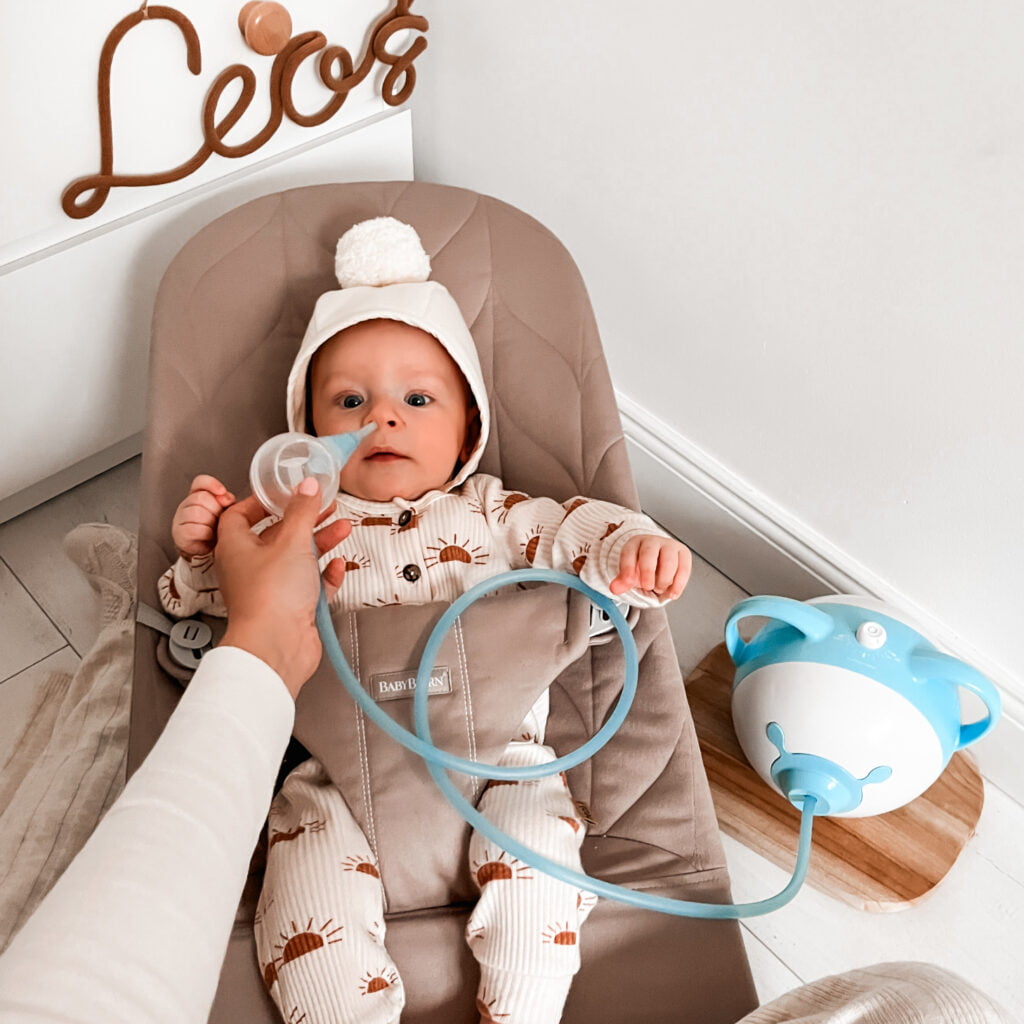
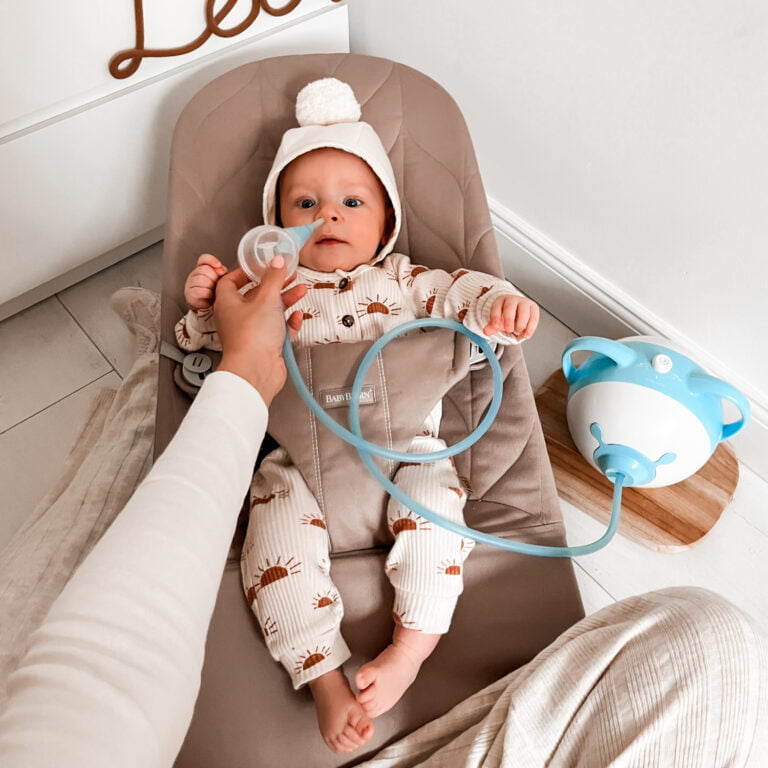
Nasal aspiration and nasal rinsing in babies – yes or no?
When deciding on what to do when your baby has a stuffy or runny nose, parents usually bet on nasal aspiration and/or nasal rinsing. Both methods are effective and safe when applied correctly. However, at first, it can be a little bit confusing to understand what the difference is between them, especially when dealing with a newborn who has a cold, and you want to be extra cautious.
We offer a helping hand to organize your knowledge a bit and guide you on using both methods complementarily for the joy of a fully clean nose.

Nasal aspiration
Method: using a nasal aspirator to physically suction mucus from the child’s nose.
Device: nasal aspirators of different kinds (e.g. manual nasal aspirator, electric nasal aspirator).
Benefits:
- Quickly removes excess mucus, providing immediate relief from a runny nose or nasal congestion.
- Thanks to technological development, modern nasal aspirators offer effective and safe operation, making them suitable even for newborns and easy to use for parents.
Advice for parents:
- Choose a nasal aspirator appropriate for the child’s age, considering other important factors like the ease of cleaning, comfort of use, or portability. Read more: How to choose a nasal aspirator?
- Pay attention to the device’s safety and certifications. Read more: 4 factors that make a nasal aspirator safe.
- Remember that it is not strength but the technology that determines a nasal aspirator’s efficiency. Read more: My nasal aspirator is not effective! Why?
- Don’t overuse the nasal aspirator! Around 10 seconds per nostril is sufficient to clean the nose.
- Don’t cover the other nostril while suctioning. It won’t increase effectiveness but might create an unpleasant feeling for the baby.
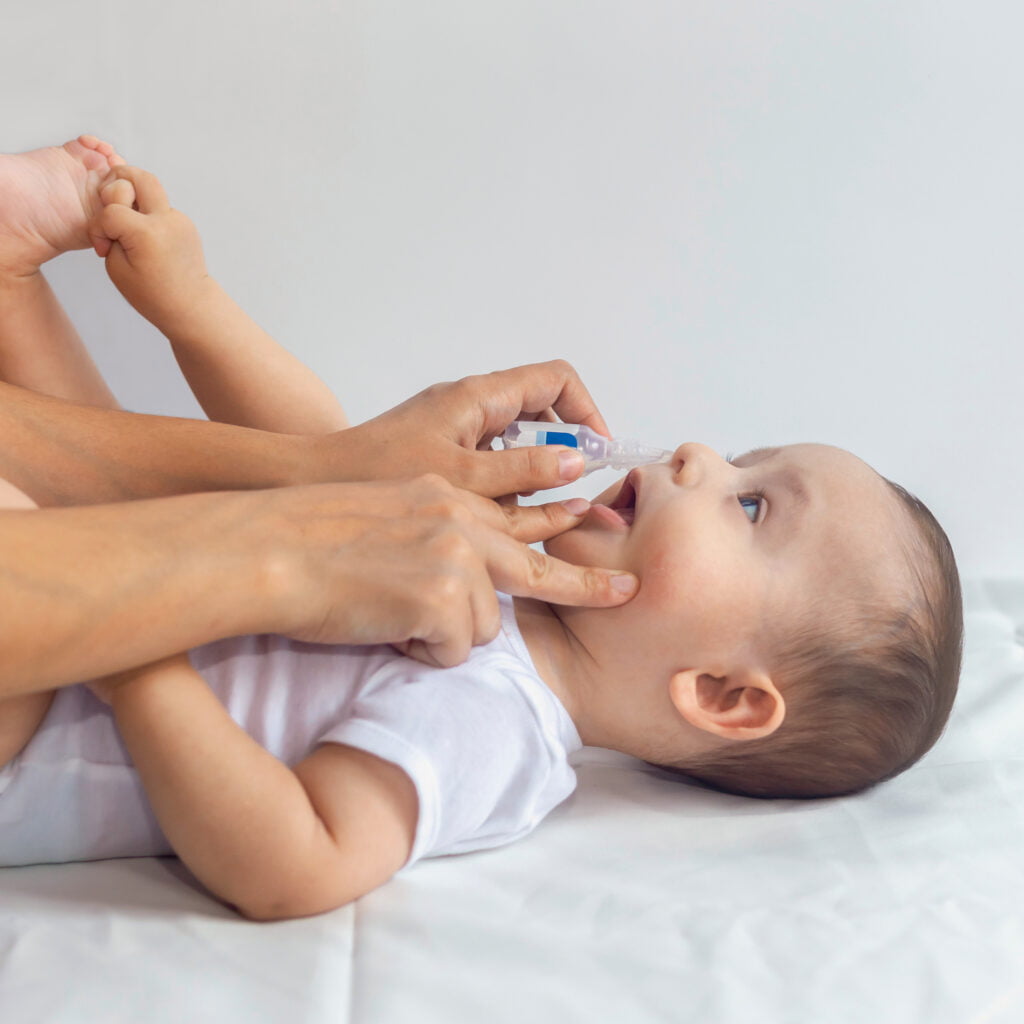
Nasal rinsing
Method: Flushing the nasal passages with a saline solution to help remove mucus and irritants.
Device: Nasal saline drops, sprays, or saline nasal irrigation kits.
Benefits:
- Helps to dilute thick secretions when your baby has a stuffy nose.
- Especially useful when a baby has an allergic reaction to flush the irritants from the nose (e.g. dust, pollen).
Advice for parents:
- Use sterile saline solutions or prepared saline packets designed for nasal rinsing. Avoid those with additives or medications unless prescribed by a healthcare professional.
- Don’t perform nasal rinsing directly before using a nasal aspirator. The saline solution needs some time to start working. If you want to use these methods complementarily, always wait until all dissolved solution flows out of the nose first.
- Don’t attempt to suction up the saline solution from the nose with a nasal aspirator as it can damage the device! For example, in the case of the Nosiboo nasal aspirators, the container for the suctioned mucus (the Colibri/Penguin head) can hold up to 5 ml of liquid. Also, the container should always be held vertically to prevent the collected secretion from entering the pipe.
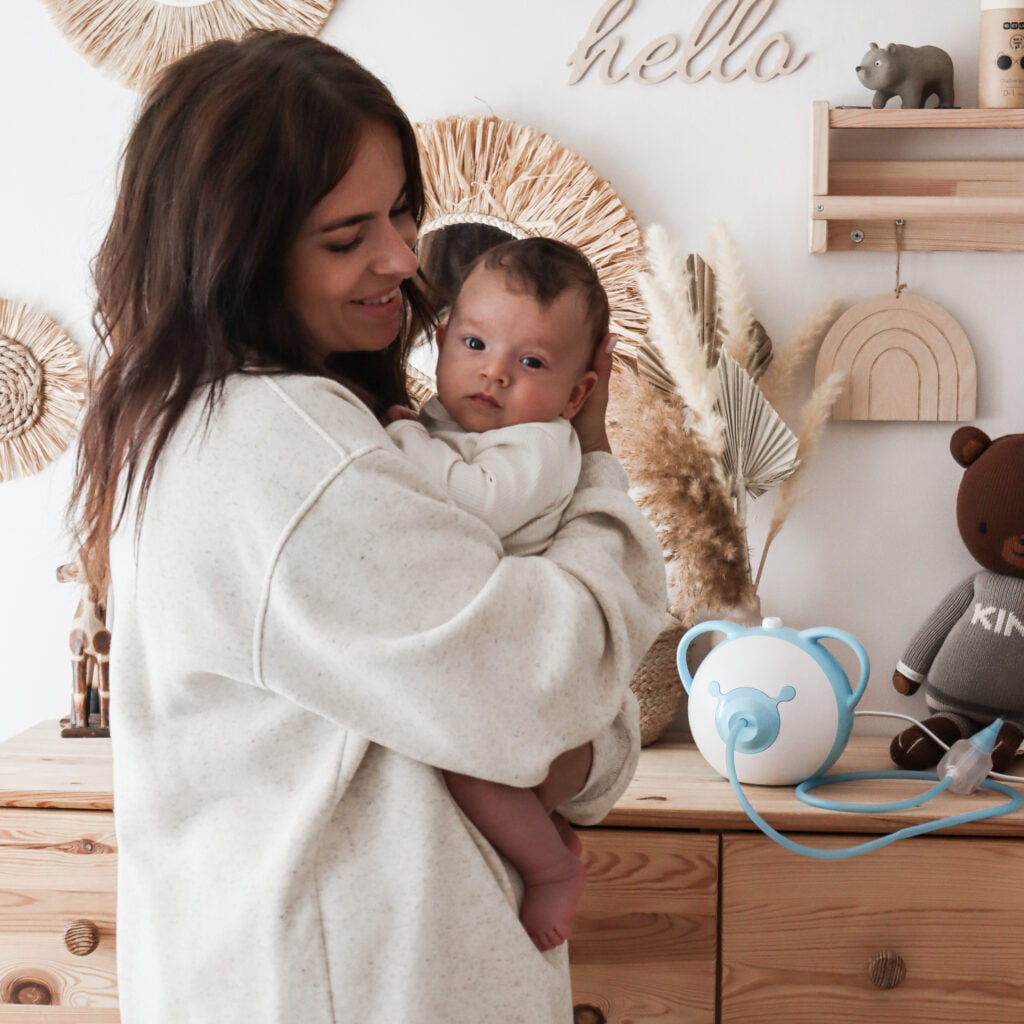
Mix the methods!
There’s no contradiction in using both nasal rinsing and nasal aspiration for comprehensive hygiene. In fact, using saline solution beforehand can make the nasal aspirator’s job easier by dissolving secretions.
If you are uncertain about how to apply those methods when your baby has a runny nose, we advise you to consult with a healthcare provider as well, especially if the child has underlying health conditions. Children may respond differently to nasal rinsing and nasal aspiration, so what works for one may not be suitable for another. Try both methods to discover what fits you and your baby the most!
If you’re considering nasal aspiration, Nosiboo offers a range of certified medical devices that clean little noses quickly and effectively. Get to know them all:
Main picture: @siemapandy
Bibliography:
Chirico, G., Quartarone G., and Mallefet P. (2014). Nasal congestion in infants and children: a literature review on efficacy and safety of non-pharmacological treatments. Minerva pediatrica,66.6 (2014): 549-557 https://www.ncbi.nlm.nih.gov/pubmed/25336097
Eric F. Succar MD, Justin H. Turner MD, PhD, Rakesh K. Chandra MD (2019). Nasal saline irrigation: a clinical update. International Forum of Allergy & Rhinology, vol. 9, issue S1; S4-S8. https://onlinelibrary.wiley.com/doi/10.1002/alr.22330
Hardjojo A, Shek LP, van Bever HP, Lee BW. (2012). Rhinitis in children less than 6 years of age: current knowledge and challenges. Asia Pac Allergy, Jan;2(1):90. https://www.ncbi.nlm.nih.gov/pmc/articles/PMC3206246/
Roberts G., Xatzipsalti M… (2013). Paediatric rhinitis: position paper of the European Academy of Allergy and Clinical Immunology. European Journal of Allergy and Clinical Immunology, vol. 68, issue 9, 1102-1116. https://onlinelibrary.wiley.com/doi/full/10.1111/all.12235
Y Wang, L Jin, S-X Liu, K Fan, M-L Qin, S-Q Yu (2020). Role of nasal saline irrigation in the treatment of allergic rhinitis in children and adults: A systematic analysis.https://pubmed.ncbi.nlm.nih.gov/32331798/
